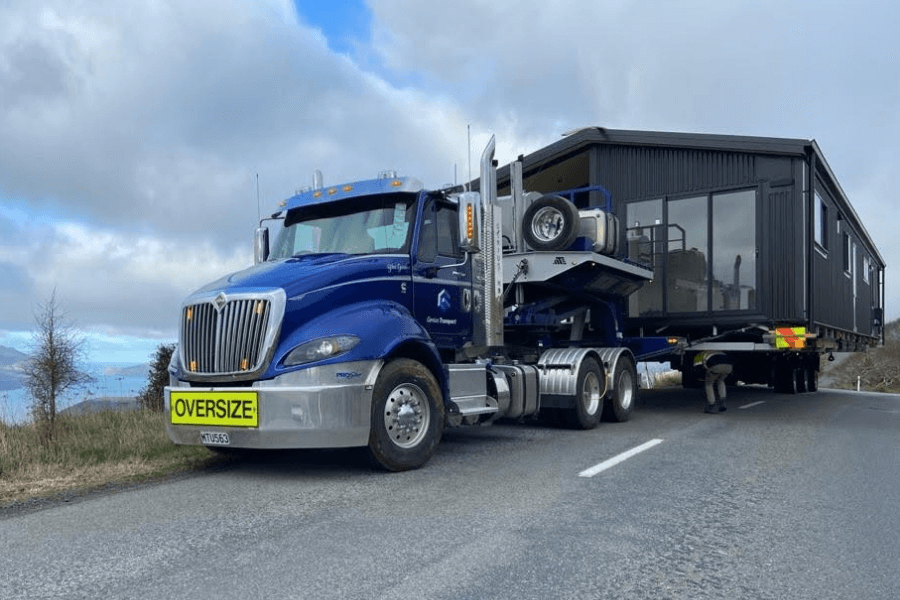What is a transportable home?
When people think of a transportable home, the first thing that comes to mind is a square, box-like building with a typical cookie-cutter design and structure. And this wouldn’t be unreasonable as many transportable homes are designed this way to make moving them simple and efficient. But as new innovative technology is developed those typical ‘cookie-cutter homes’ have come a long way. Transportable homes can now be real works of art — type 'transportable homes' into Pinterest and you will be bombarded with stunning, architecturally designed, transportable homes.
In this article, we’ll explore what a transportable home is and isn’t to help you understand whether one is the right choice for your housing needs.
What is a transportable home?
Typically a transportable home is a house that is built in one location and, once constructed, is moved or 'transported' to a separate, more permanent location using a truck. The term 'transportable home' is really just an umbrella term that encompasses any style of home that is built in one location before being moved to another at a later date. By definition 'transportable home' can encompass prefab homes which are built in a factory and then delivered to site where they remain a permanent residence, but can also encompass modular homes, relocatable homes, and even tiny homes.
In short, a transportable home is a house of any size that is moved from one location to another. This may be once or maybe many times.
Does a transportable home need to be a tiny home?
The short answer is no, even though a transportable home needs to be delivered to site with a truck, a transportable home can be anything from a 1-bedroom dwelling to a 4-bedroom home in size. Many transportable home companies build 'tiny' or small homes so it lessens the procedures on transporting large loads. If a home is 3-metres wide or less that’s an indication that it’s been designed with transport in mind.
However, once you start looking at a larger-scale home, it's likely the home will be transportable in sections or 'modules'. Once moved, it's smart to consider leaving it as a permanent home once on site too as moving a large house multiple times can have a negative long-term effect on the structure of the house, not to mention the cost of moving a house each time.

Is building a transportable home cheaper?
Often it is cheaper to build a transportable home than a traditional home. This is mainly due to the fact that they are typcically prefabricated and therefore built faster than traditionally-constructed homes because they are factory-built. Generally, it takes one to four months longer to build a traditional home than it does to construct a prefab transportable home, especially during the winter months, when there are more days with rain than sunshine. See our recent article for more information on how much it costs to build a house.
You'll need to factor in the transport cost as well, although in many cases this will still end up cheaper than building a traditional home. This is because a transportable home has a single transport cost (from the factory to its final resting site) whereas a traditional home will have tradesmen travelling to and from the site every day they’re working. This time, fuel and vehicular cost needs to be added to the project, so even though it may seem like transport is an extra cost for a transportable home it’s simply more visible.
Over the past year, ending July 2020, 5,729 building consents were issued in Canterbury and 3,776 in the rest of the South Island. In Canterbury alone, this was a 13% increase compared to its previous year with a 5% increase seen for the rest of the South Island. With the high demand for houses in New Zealand, we are seeing a huge increase in the number of new-build homes being erected as people struggle to find a home they will enjoy thanks to the limited stock available.
Unfortunately, the biggest issue many homeowners are facing is the timeframe it takes to build a new home. Not only is demand causing longer build times but weather can also play an unexpected role when it comes to how long it takes a house to be built.
This is why more people are turning to transportable and prefab homes. Not only are the houses built in a factory, which means fewer disruptions but a transportable home can be built and delivered to site in as little as 20 weeks! This isn’t due to cutting corners or using cheaper solutions, it is due to the construction process. Building within a factory means that weather conditions don't hinder the building process, delay supply delivery or get in the way of the home reaching the next stage of construction. Houses built indoors, under controlled environments, can be built up to 40% quicker than a conventional home.
If you’re interested in building a transportable home and would like to explore your options, check out the full range of prefab home designs by downloading our product catalogue via the link below. 
